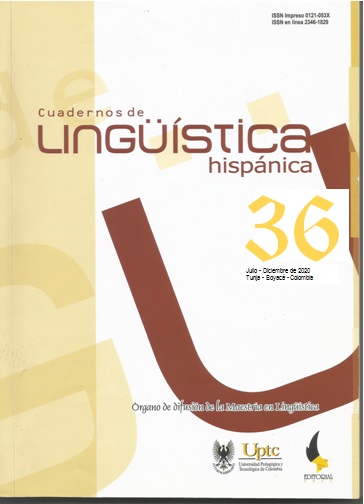Multilingüismo y aculturación en Cataluña: un análisis de las mujeres inmigrantes musulmanas

Resumen
Debido al continuo influjo de inmigración en Cataluña, el multilingüismo se ha convertido en la base de esta región. Aún así, el catalán y el español siguen como los idiomas dominantes de la comunicación cotidiana, y los inmigrantes se enfrentan al desafío de adoptar identidades lingüísticas en ambos. Este proceso de doble aculturación puede durar de generación en generación y puede ser afectado por una variedad de factores socioculturales. Además, la motivación para aculturarse puede estar enraizada en la propia identidad compleja que se construye en diferentes contextos socioculturales, una conexión que Norton (2000) ha conceptualizado como "inversión." Este estudio examina la inversión en español y catalán entre las mujeres inmigrantes musulmanas, y los factores socioculturales que la influyen. Este estudio se basa en datos recopilados de 34 mujeres inmigrantes musulmanas de diversos orígenes geográficos. Los resultados indican que una variedad de factores afecta la relación entre las informantes y sus identidades lingüísticas, a menudo de maneras dispares. Además, las informantes de primera y segunda generación presentaron distintas experiencias con la aculturación, lo que sugiere que es un proceso transgeneracional. Finalmente, las respuestas de las informantes también sugieren que su inversión lingüística se basa en su identidad de género y religiosa.
Palabras clave
Multilingualism, acculturation, migrant communities, Spanish, Catalan
Citas
Ali, F. (in press). Identity and investment in language learning: a case study of heritage
Spanish speakers. Spanish in Context.
Ali, F. (2019). Language Attitudes among Muslim Women in Barcelona. (Unpublished
doctoral dissertation). University at Albany, SUNY. Albany, NY.
Block, D. (2014). Social class and applied linguistics. Oxon, UK: Routledge.
Cortès-Colomé, M., Barrieras, M., Comellas, P. (2016). Changes in immigrant
individuals’ language attitudes through contact with Catalan: the mirror effect.
Language Awareness, 25(4), 272-289.
Darvin, R. & Norton, B. (2015). Identity and a Model of Investment in Applied Linguistics
Annual Review of Applied Linguistics, 35, 36–56.
Estors Sastre, L. (2014). Les Actituds lingüístiques segons l'origen dels aprenents de
català com a llengua d'acollida. Treballs de Sociolingüística Catalana, 24, 153-
171.
Fukuda, M. (2017). Language use in the context of double minority: the case of
Japanese-Catalan/Spanish families in Catalonia. International Journal of
Multilingualism, 14(4), 401-418.
Gore, S. (2002). The Catalan language and immigrants from outside the European
Union. International Journal of Iberian Studies, 15(2), 91-102.
Haneda, M. (2005). Investing in foreign-language writing: A study of two multicultural
learners. Journal of Language, Identity, and Education, 4(4), 269–290.
Higgins, C. (Ed.). (2011). Identity formation in globalizing contexts: Language learning in
the new millennium (Vol. 1). Berlin, Germany: Walter de Gruyter.
Huguet, À. & Janés, J. (2008). Mother tongue as a determining variable in language
attitudes. The case of immigrant Latin American students in Spain. International
Journal of Bilingual Education and Bilingualism, 8(4), 247-260.
Kamada, L. (2010). Hybrid identities and adolescent girls. Bristol, UK: Multilingual
Matters.
Marshall, S. (2007). New Latino Diaspora and New Zones of Language Contact: A
Social Constructionist Analysis of Spanish Speaking Latin Americans in
Catalonia. In Selected Proceedings of the Third Workshop on Spanish
Sociolinguistics, ed. Jonathan Holmquist, Augusto Lorenzino, and Lotfi Sayahi,
150-161. Somerville, MA: Cascadilla Proceedings Project. www.lingref.com,
document #1536.
Menard-Warwick, J. (2009). Gendered identities and immigrant language learning.
Bristol, UK: Multilingual Matters.
Norton, B. (2000). Identity and language learning: Gender, ethnicity and educational
change. Essex: Pearson.
Norton, B. (2013). Identity and language learning: Extending the conversation (2nd ed.).
Bristol, UK: Multilingual Matters.
Potowski, K. (2004). Student Spanish use and investment in a dual immersion
classroom: Implications for second language acquisition and heritage language
maintenance. The Modern Language Journal, 88(1), 75–101.
Pujolar, J. (2009). Immigration and language education in Catalonia: Between national
and social agendas. Linguistics and Education, 21, 229-243.
Schumann, J. (1978). The pidginization process: a model for second language
acquisition. Rowley, Mass: Newbury House Publishers.
Schumann, J. (1986). Research on the acculturation model for second language
acquisition. Journal of Multilingual and Multicultural Development, 7, 379-392.
Skilton-Sylvester, E. (2002). Should I stay or should I go? Investigating Cambodian
women’s participation and investment in adult ESL programs. Adult Education Quarterly, 53(1), 9–26.
Trenchs-Parera, M., Newman, M. (2009). Diversity of language ideologies in two
generations of Spanish-speaking youth of immigrant origin in Catalonia. Journal
of Multilingual and Multicultural Development, 30(6), 509-524.
Woolard, K. (1989). Double Talk: Bilingualism and the Politics of Ethnicity in Catalonia.
Stanford University Press.
